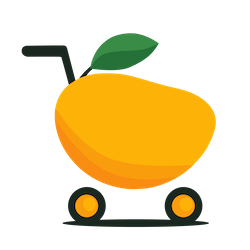Find your exact starting point based on YOUR unique situation, complete with a practical 30-day action plan…
Your Upper Funnel Marketing Starting Point Matrix
Your Situation | Limited Time (<2 hrs/week) | Moderate Time (2-5 hrs/week) | More Time (5+ hrs/week) |
|---|---|---|---|
Enjoy Writing | Start with 1 high-quality blog post answering a common question | Create weekly content + join 1-2 relevant communities | Content series + community engagement + reach out to complementary experts |
Comfortable on Camera | Record one simple “how-to” video | Weekly short videos + share in 1-2 communities | Regular videos + podcast guesting + simple testimonial collection |
Prefer Speaking | Apply to 1 podcast per week as a guest | Podcast guesting + join audio-based communities | Podcast circuit + joint webinars + collect audio testimonials |
Limited Budget | Repurpose existing knowledge into helpful posts | Community participation + strategic partnerships | Content creation + relationship building + testimonial collection |
Some Budget ($100-300/month) | Minimal ad spend to test audiences + 1 piece of content | Split between content creation and targeted ads | Combine organic strategies + gradually increase performing ad campaigns |
Existing Audience (Even Small) | Collect testimonials + create case study | Testimonials + partner with complementary expert | Convert audience into case studies + joint ventures + targeted content |
Look at the table above and find where you fit. Maybe you enjoy writing but have limited time. Perhaps you’re comfortable on camera with a modest budget. Whatever your situation, there’s a starting point for you.
Most online creators and entrepreneurs try to do everything at once and burn out quickly. Instead, pick just ONE strategy that matches your strengths and available time. You can add more tactics later.
–
Simple Marketing Terms Explained (incl. The REACH Method)
Before diving into strategies, let’s get clear on what these marketing terms actually mean in plain English:
Term | Plain English Definition | Why It Matters for Course Creators & Digital Product Sellers |
|---|---|---|
Upper Funnel | The stage where people first learn you exist | Most of your future customers don’t know you yet – this is your biggest opportunity to grow |
Awareness | When potential customers discover you and your expertise | Without awareness, people can’t buy from you, no matter how good your product is |
Tracking Links | Special website links that tell you where visitors came from | Helps you know which of your efforts are actually bringing in potential customers |
Conversion | When someone takes an action you want (subscribing, buying, etc.) | The ultimate goal, but it starts with upper funnel awareness |
ROI | Return on Investment – what you get back compared to what you put in | Helps you decide where to focus your limited time and money |
UTM Parameters | Codes added to links that track where traffic comes from | Simple way to see which social posts or communities send you visitors |
Social Proof | Evidence that others trust and value what you offer | Makes new people more comfortable trusting you when they first discover you |
I remember when I first started my online business, these terms confused me.
What even is a “funnel” anyway?
But understanding these basics helps everything else make sense.
Now let’s explore the REACH Method – 5 fundamental strategies that work for attracting new folks to your digital business, whether you sell courses, coaching, or digital products.
R = Recognize
E = Engage
A = Amplify
C = Connect
H = Highlight
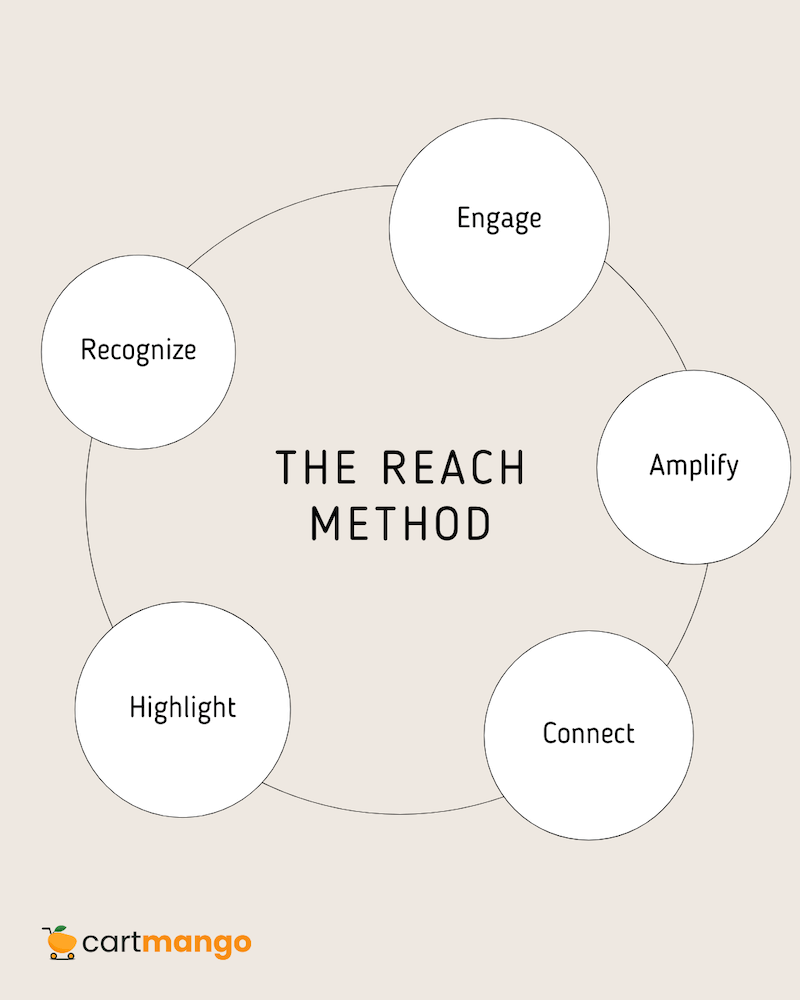
–
Strategy #1: Creating Helpful Content That Answers Basic Questions (Recognize)
The first step in getting noticed is creating content that helps people in your field. You want people to recognize you as a helpful source of information.
Finding what people ask isn’t complicated. You can use free keyword research tools like Ahref’s Keyword Generator to discover what your potential customers are searching for online. Look for questions that come up repeatedly.
Write one helpful article that answers a common question.
Use a simple formula: define the problem, clear up confusion, show a better way, and suggest next steps. This straightforward approach works for nearly any topic.
- Don’t worry about fancy writing.
- Just focus on being helpful and clear.
- People appreciate direct, honest advice more than perfect prose.
This might take about 3-4 hours per week, which seems like a lot. But honestly, it gets faster with practice. My first blog posts took me forever to write, and now I can do them much more quickly.
You only need a website or a free Medium account to get started. No fancy tech required. If you already have a basic website for your business, that’s perfect.
Once you have your article, share it where your potential customers hang out. Post it on your social media accounts, relevant online communities, and anywhere else your audience might be.
I’ve found that consistently sharing content, even just once a week, builds momentum over time.
–
Strategy #2: Getting Featured on Podcasts (Engage)
Being a podcast guest is often overlooked as a marketing strategy. Yet it’s one of the fastest ways to reach new audiences who might be interested in what you offer.
The best part? You don’t need to start your own podcast. Being a guest is much easier – no equipment to buy, no show to maintain. You just show up and share your knowledge.
Finding podcasts your potential customers listen to isn’t as hard as you might think. Use services like PodMatch or MatchMaker FM to find relevant shows you want to speak on.
You can also search for your topic on Spotify or Apple Podcasts and see what shows up. Look for podcasts that interview guests regularly and have an audience similar to your target customers.
Reaching out doesn’t have to be complicated.
Craft a message that gets hosts interested in interviewing you. Keep it simple and focus on what value you can provide to their audience.
For your interview, prepare three main talking points:
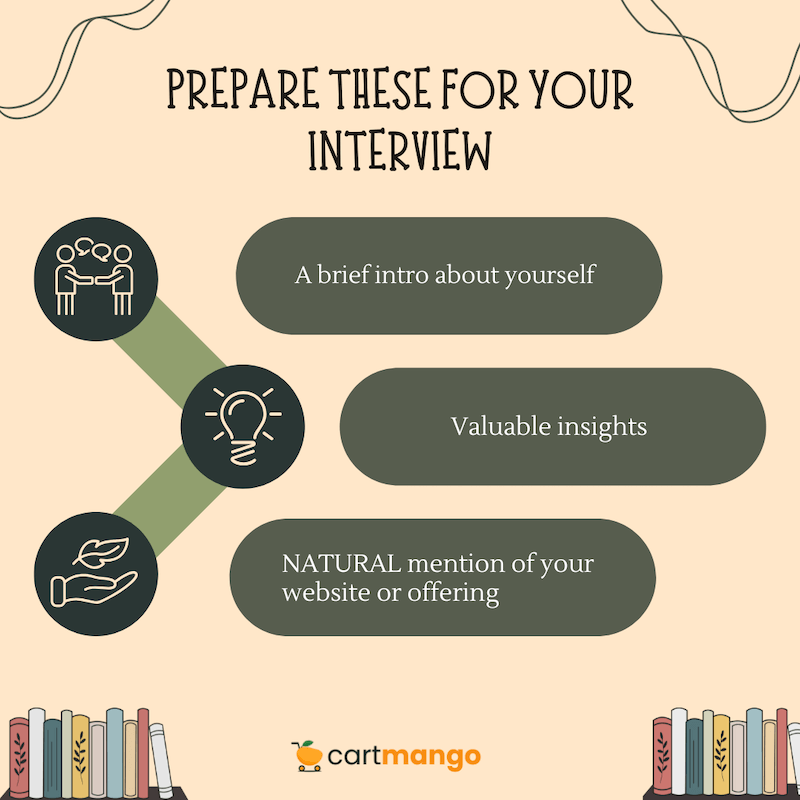
- a brief introduction about yourself
- valuable insights related to the podcast topic
- and a natural mention of your website or offering
Don’t overthink this – just be conversational and helpful.
Budget about 2-3 hours for preparation and an hour for the actual interview. It’s a small time investment compared to the potential reach. I find that preparing bullet points rather than scripting everything works best – it keeps the conversation natural.
–
Strategy #3: Simple YouTube Videos That Work While You Sleep (Amplify)
YouTube is not just another social platform. It’s more a search engine where your content lives forever.
83% of small and medium businesses with YouTube channels agree that the platform helped them grow their customer base by reaching new audiences. (Source)
You don’t need fancy equipment to start. A decent smartphone camera, basic lighting, and clear audio will get you going for under $150. Perfect production quality matters much less than helpful content.
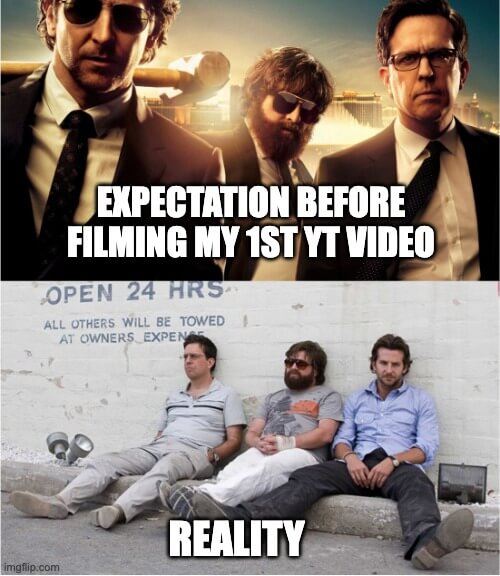
(thanks Imgflip for the memes)
Focus on three types of videos that work well for course creators and coaches:
First, create how-to tutorials that solve related problems (without giving away your paid content). These attract people looking for solutions.
Second, make myth-busting videos that clear up common misconceptions in your field. These position you as an expert who tells the truth.
Third, share behind-the-scenes glimpses into your work process. These build connection and trust with potential customers.
Save time by batch recording 2-3 videos in one 3-4 hour session. This is more efficient than setting up equipment for each video separately.
Create eye-catching thumbnails with templates from Canva. A good thumbnail can double your click-through rate without requiring design skills.
–
Strategy #4: Joining Conversations Where Your Future Customers Hang Out (Connect)
Most marketers focus on broadcasting their message, but forget the power of simply joining existing conversations. Your future customers are already talking online – you just need to find them and add value.
Look for online groups where your potential customers discuss problems you can solve. These might be on Reddit, Facebook Groups, or industry forums. Just search for your topic and see where people are having active discussions.
The key is to help others 80% of the time and mention your business only 20% of the time. This ratio builds trust without coming across as pushy or sales-focused. Nobody likes someone who just joins a group to promote themselves.
Before jumping in, spend some time lurking and learning group norms.
- What topics get positive responses?
- What kind of language do people use?
- Matching the community’s tone helps you fit in naturally.
Prepare helpful answers to common questions in advance. This saves you time when responding and ensures you provide thorough, valuable information. I keep a document of pre-written responses that I can customize for specific questions.
Track which groups actually send visitors to your website using simple tracking links. This tells you where to focus your limited time. Some communities will drive much more traffic than others, and it’s not always the largest groups that perform best.
Aim to spend about 15-20 minutes daily participating and 1-2 hours weekly preparing content for these communities. Consistency matters more than quantity here.
–
Strategy #5: Gathering and Sharing Proof That Builds Trust (Highlight)
People trust what others say about you far more than what you say about yourself.
That’s why collecting and sharing proof of your value is crucial for building trust with new audiences.
Start gathering client success stories and testimonials systematically. When someone gets good results from your product or service, ask them to share their experience in their own words.
Use simple email templates to request testimonials.
A basic:
“I noticed you got [specific result] from [your product/service]. Would you be willing to share a few sentences about your experience?” works well.
Make it easy for people to respond – if the request feels like work, they probably won’t do it.
Share these testimonials across your website, social media, and email communications. Place them strategically where potential customers might have doubts or questions. I’ve found that testimonials addressing specific concerns convert much better than generic praise.
Turn your best client results into more detailed case studies. These show the before, during, and after of working with you, which helps potential customers see themselves in the story.
Aim to collect 2-3 strong success stories each month. Quality matters more than quantity. One detailed, specific testimonial from a relatable client is worth dozens of vague positive comments.
–
Bonus Strategy #1: Building Strategic Partnerships
Traditional networking events often don’t work well for online businesses.
Instead, try the “3×3” approach: reach out to 3 complementary experts each week who serve your same audience in different ways.
E.g. If you teach online course creation, connect with web designers, email marketing specialists, and business coaches who work with the same types of clients. You’re not competitors, but your audiences overlap.

Create win-win partnerships that introduce you to each other’s audiences. This could be guest blog posts, podcast interview swaps, or joint social media takeovers. The key is making sure both parties benefit equally.
Joint online workshops or webinars are particularly effective. Each partner promotes to their audience, and everyone wins: you reach new people, your partner reaches new people, and the audience gets value from both of you.
Use platforms like Twitter/X to make initial connections with potential partners. It’s less intrusive than cold emails and lets you build a relationship gradually. I usually follow potential partners, engage with their content for a few weeks, then reach out with a specific collaboration idea.
This approach takes time to build – expect to spend 20-30 minutes daily engaging with potential partners and 2-3 hours preparing for joint events. But the results compound as your network grows.
–
Bonus Strategy #2: Small-Budget Advertising
Not all marketing requires a big budget. Even $5-10 per day can help you reach new potential customers if you target carefully.
Start with simple awareness campaigns focused on introducing your expertise to new audiences.
Target based on interests related to your topic, and demographics that match your ideal customer profile.
You don’t need design skills to create effective ads. Simple, text-based ads often outperform flashy graphics, especially for educational products and services. Focus on clearly communicating the value you provide rather than creating visual masterpieces.
Use basic tracking to see which ads perform best and adjust accordingly. Facebook’s Ad Manager provides enough data for beginners to make informed decisions about what’s working.
Test different messages and audiences with small budgets before scaling up.
–
Your 30-Day REACH Method Implementation Plan
Turning knowledge into action requires a concrete plan. Here’s a 30-day roadmap to implement the REACH Method, broken down by week:
Week | Recognize (Mon) | Engage (Tue) | Amplify (Wed) | Connect (Thu) | Highlight (Fri) |
|---|---|---|---|---|---|
Week 1 | Research audience questions (30-45 min) Outline first content piece (45 min) | Find 3 podcasts that fit your audience (45-60 min) | Set up basic recording space (1-2 hrs) | Identify 2-3 online communities (30-45 min) | List current client successes (30 min) |
Week 2 | Create first blog post (3-4 hrs) | Send first podcast outreach email (15-20 min) | Plan first video topic (30-45 min) Script basic outline (30-45 min) | Join communities and observe conversations (15-20 min/day) | Create simple testimonial request email (30-45 min) |
Week 3 | Share blog post in 2-3 places (15-20 min) | Follow up on podcast request (10-15 min) Prepare talking points (1-2 hrs) | Record first video (1-2 hrs) Basic editing (1-2 hrs) | Answer 1 question thoughtfully in each community (30-45 min) | Send testimonial requests to 2-3 past clients (15-20 min) |
Week 4 | Review content performance (20-30 min) Plan next piece (30-45 min) | Podcast appearance prep or record (1-2 hrs) | Upload video and optimize (45-60 min) Plan next video (30-45 min) | Begin reaching out to potential partners (30-45 min) | Organize received testimonials (30-45 min) |
This schedule requires about 4-8 hours weekly, depending on your pace and which activities you prioritize.
According to Worldwide Business Research, B2B buyers complete 57% to 70% of their research before contacting sales, so even this minimal plan can produce meaningful results over time.
Don’t worry if you fall behind or need to adjust the schedule. The important thing is consistent action, not perfect execution. Some weeks you might focus more on one column than others, and that’s perfectly fine.
–
Measuring Success Without Getting Overwhelmed
Many creators and entrepreneurs either obsess over every metric or avoid measurement entirely. Neither approach works well.
Instead, track these 5 key metrics:
Metric | What It Measures | How to Track It | Realistic Benchmark | Free Tools |
|---|---|---|---|---|
Website Visitors | Number of new people discovering you | Weekly visitor count | 2-5% growth month-over-month | |
Content Engagement | How interesting your content is | Time on page, comments, shares | 1-2 min avg. time on page | Google Analytics, social platform insights |
Social Following | Growth of potential audience | New follower count | 1-3% growth month-over-month | Built-in platform analytics |
Podcast/Guest Appearances | Expanded reach opportunities | Number of appearances, referral traffic | 1 new appearance every 1-2 months | UTM tracking links, asking new subscribers |
Brand Mentions | Awareness spread | Your name/brand mentioned online | Any increase is positive | Google Alerts, social listening tools |
Set a 15-minute weekly review appointment with yourself.
Check these metrics each Friday and note any trends, but don’t obsess over daily fluctuations. Your awareness-building efforts contribute directly to future sales.
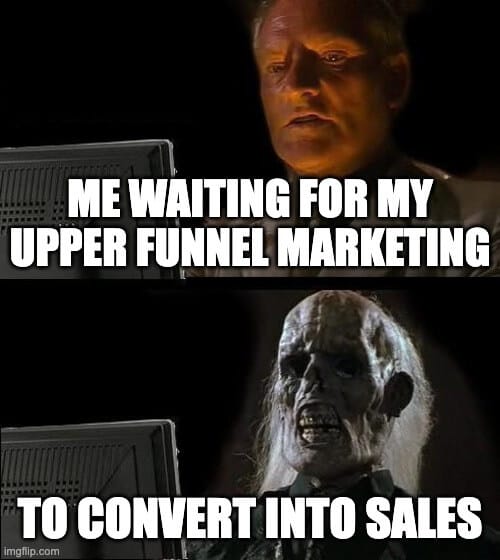
Upper funnel marketing builds momentum gradually.
You might not see dramatic results in the first month, but consistent effort compounds over time. I’ve found that the 6-month mark is often when things start to click.
–
Common Roadblocks and Easy Solutions
Every entrepreneur faces challenges with marketing. Here are practical solutions to the most common roadblocks:
Challenge | Practical Solution | Time to Implement |
|---|---|---|
I don’t have enough time | Start with just ONE strategy from the matrix Use the 5-5-5 method: 5am (or any consistent time), 5 minutes, 5 days a week | 5-10 minutes daily |
I have zero budget | Focus on content creation + community participation Trade skills with other entrepreneurs instead of paying for services | 2-4 hours weekly |
I’m not sure what my audience wants | Ask your existing audience/clients directlySearch Reddit/Quora for questions in your topic | 1-2 hours research |
I’m not seeing results right away | Upper funnel marketing typically shows results in 6 months Focus on consistent small actions rather than results
| Ongoing habit |
I’m not tech-savvy | Start with what you’re comfortable with (writing if you write, speaking if you speak) Use templates and user-friendly tools like Canva, Loom, or Zoom Find step-by-step tutorials on YouTube for any specific task | Learning curve: 2-3 hours per tool |
The most common mistake I see is giving up too soon.
Upper funnel marketing isn’t about overnight success. It’s about building awareness that compounds over time. Stick with your chosen strategy long enough to see results.
–
From Upper Funnel to Marketing Success
Now that you’ve learned practical upper funnel strategies and how to implement them, let’s zoom out and see how these tactics fit into the bigger picture of a complete marketing funnel. This will help you plan your next steps after mastering the basics.
What Is a Marketing Funnel?
A marketing funnel represents how people move from first discovering you to becoming loyal customers. Picture a real funnel – wide at the top (many potential customers) and narrow at the bottom (those who actually buy).
The marketing funnel has three main parts:
- Top of the funnel: Where people first discover you
- Middle of the funnel: Where they research options
- Bottom of the funnel: Where they decide to buy
Your customer journey doesn’t always follow a straight path, but understanding these stages helps create the right content for people at each step.
Top of Funnel Marketing: Building Awareness
The strategies we’ve covered focus on top of funnel marketing – introducing your brand to a wide audience who might not know you exist yet. This awareness stage is about brand building and increasing brand visibility.
During this phase, potential buyers aren’t ready to purchase. They’re just starting their buying journey. Your goal is to build brand awareness and attract a broad audience through:
- Content marketing that educates without selling
- Social media posts that engage new audiences
- Video ads and social media ads that extend your brand’s reach
- Radio ads for local businesses
- Search engine optimization to appear in relevant searches
Top of funnel content should be informative content that helps solve problems without pushing for immediate sales. This approach works across multiple channels and online platforms to generate leads and create an emotional connection with potential customers.
Moving to Consideration Stage
As your audience moves from the top of funnel to the consideration stage, they’ll compare options. This is where you need to showcase what makes your offerings unique.
People often use branded search terms at this stage as they specifically look for information about your brand on mobile devices and other platforms.
Lower Funnel Marketing: Converting Interest to Sales
Low funnel marketing targets people with purchase intent who are closer to buying. These qualified leads understand their problem and are evaluating solutions.
Lower funnel tactics focus on:
- Addressing specific objections
- Providing detailed product information
- Clear calls to action
The sales team often gets involved here to answer questions and guide potential buyers through conversion funnels to the purchasing stage.
Bottom of the Funnel: Securing the Sale
At the bottom of the funnel, people are ready to buy. Your marketing efforts should make the purchase process simple and reassuring.
Some effective strategies:
- Clear pricing information
- Streamlined checkout process
- Support during the purchasing decision
Beyond Purchase: Customer Lifetime Value
Remember that the funnel doesn’t end at purchase. Encouraging repeat purchases and turning customers into advocates increases customer lifetime value.
Marketing activities for existing customers might include:
- Check-ins at different stages of product use
- Loyalty programs
- Referral incentives
Full Funnel Marketing Strategy
A full funnel marketing strategy addresses all stages of the customer journey.
Rather than focusing exclusively on upper funnel tactics, full funnel marketing ensures smooth transitions between different stages of awareness, consideration, and purchase.
The benefits of a full funnel strategy include:
- Attracting new leads at the top
- Nurturing interest in the middle
- Converting sales at the bottom
- Maximizing customer lifetime value after purchase
As your business grows, your marketing team might expand to include specialists for different stages of the funnel.
Performance Marketing Across the Full Funnel
Performance marketing measures results at every stage using key performance indicators like:
- Impressions and reach for top of funnel
- Engagement for middle funnel
- Conversion rates and new customers for lower funnel
- Repeat purchases post-purchase
By tracking these metrics, you can optimize marketing campaigns to deliver better results.
Balancing Upper and Lower Funnel Efforts
While this guide focuses on upper funnel marketing, you’ll eventually want to develop lower funnel tactics and a full funnel marketing strategy.
Start with the upper funnel approaches we’ve covered to build awareness, then gradually add:
- More targeted content for the consideration stage
- Sales pages and processes for the purchasing stage
- Follow-up systems for existing customers
Even as you expand, attracting leads through top of funnel content remains essential for sustainable growth. The strategies covered here will continue to serve as the foundation of your marketing efforts as you develop a more complete approach.
–
TL;DR
Upper funnel marketing doesn’t have to be complicated or overwhelming.
By following the REACH Method and starting with just ONE strategy that matches your strengths and resources, you can gradually build awareness for your digital business.
- Pick your starting point from the matrix at the beginning of this article.
- Commit to the 30-day plan for that one strategy before adding others to your mix.
- Consistency with a single approach beats jumping between multiple strategies without giving any of them enough time to work.
What matters most is taking that first step. Choose your starting point and block 30 minutes on your calendar today to begin. Next month at this time, you’ll be glad you started now rather than waiting for the “perfect” moment.
Building awareness takes time, but it’s the foundation for everything else in your business. The people who discover you today might become your customers months from now – but only if they know you exist.
Related
- Podia vs Gumroad: The Recurring Revenue Handcuffs (2026)
- SendOwl vs Gumroad: The Recurring Revenue Black Hole (2026)
- Gumroad vs Sellfy: The Vendor Lock-in Cage (2025)
- Gumroad vs Payhip: The Hidden Trap for Creators (2025)
- ThriveCart vs SamCart – The Subscription Hostage Trap (2025)
- 8 ThriveCart Alternatives & The Lifetime Pricing Paradox (2025)
- 8 SamCart alternatives + Subscription hostage (2025)
- The GENTLE Method: Soft marketing for creators
- How Far in Advance Should You Promote a Webinar?
- The SAVINGS Method: The Productivity Improvement Plan for Creators
